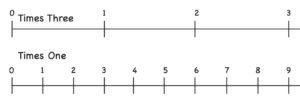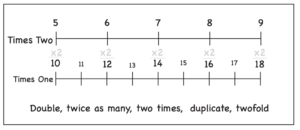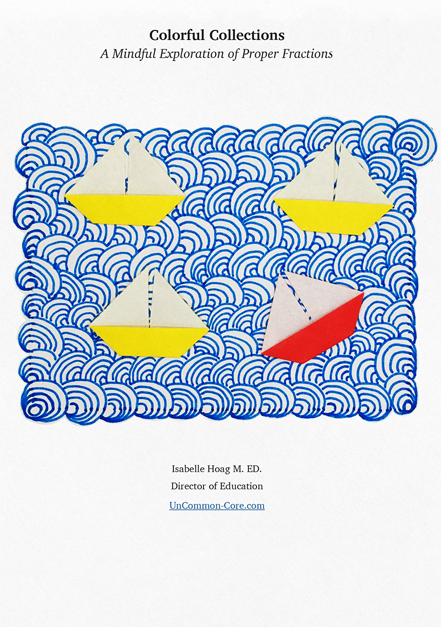Multiply with Scaled Number Lines

The More Multiplication Models The Better!
Students with experience thinking about the process of multiplication from a variety of viewpoints have more options to choose from when solving problems. They have more ways to explain how multiplication works or what multiplication means. Practicing multiplication using scaled number lines is super simple and it gives students another way to model multiplication.
Students who use scaled number lines to multiply learn to think of multiplication in terms of lengthening the distance between numbers on one number line in order to compare them with numbers on the regular (Times One) number line. The distance that the new number line is stretched, magnified, or scaled, corresponds with the multiplier (the number by which the multiplicand will be multiplied).

When comparing number lines on different scales, the multiplicand (number to be multiplied) appears opposite the product. For example, when solving 2 times three, students would compare the Times Three number line with the Times One number line. The distance between numbers on the Times Three line, is three times as large as the distance between numbers on the Times One line. For this reason, in any multiplication problem that includes a factor of three, the other factor and the product will appear directly across from each other.

To solve 9×2 using scaled number lines, a student would compare the Times Two number line with the Times One number line. First, they would match zeros at the start of each number line. Then, they would find 9 on the Times Two number line. At that point, the student would trace a line directly down from 9 to find the product: 18. Savy teachers would encourage students to write the number sentence in English using some of the terms at the bottom of the Times Two number line set. Double nine is eighteen. Eighteen is twice as many as nine. Two times nine is eighteen.
Grab this free sample today ~ see how well it works with your students!
Download Colorful Collections:
A Mindful Exploration of Proper Fractions
Help your students make sense of fractions.
I started teaching in 1987, which means I’ve collected many tips and tricks along the way. In this ebook, I share concepts, strategies, and classroom materials to help you make math sticky.
Along with this useful ebook, you will receive weekly emails from StickyMath@UnCommon-Core.com. I send information like: teacher tips, educational ideas, book reviews, curated lists, reviews of educational sites, and free first drafts of products that I’m creating for my TPT store. That way, you get helpful ideas and free stuff, while I get some feedback before I finalize products and put them up for sale.
I value your privacy. I will never sell your information. You may unsubscribe at any time.
All the best!
Isabelle
Isabelle Hoag M. Ed.

